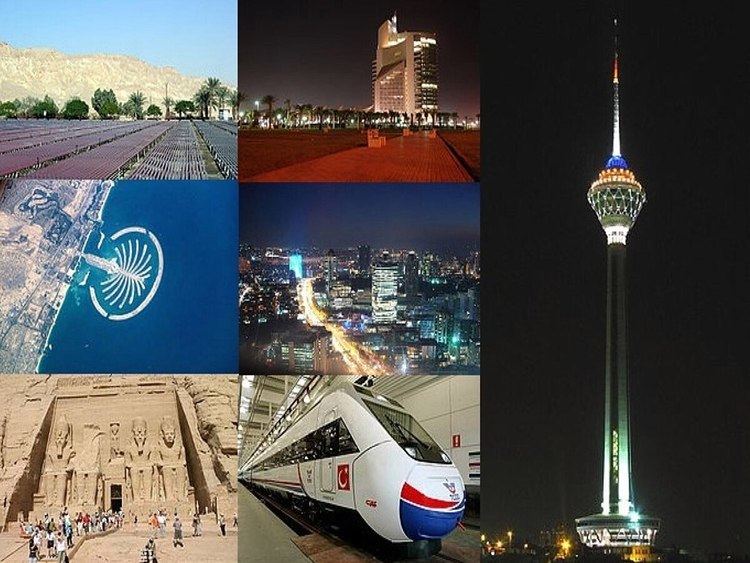Lausanne Conference 1949 Madrid Conference 1991 Hebron Protocol 1997 | Camp David Accords 1978 Oslo Accords 1993 / 95 Wye River Memorandum 1998 | |
 | ||
Policies advocating Middle East economic integration aim to bring about peace, stability and prosperity in the Middle East, which can only be sustained over the long run via regional economic cooperation.
Contents
Background
Former U.S. Secretary of State Warren Christopher said that, "Governments can create the climate for economic growth...[but] only the private sector can produce a peace that will endure."
Benefits of integration
Countries seek greater regional integration in order to:
Economic integration requires good governance, education reform, social investing, knowledge economy, market economy, privatization and freedom of press.
Objectives
In 1993 Israeli Prime Minister Shimon Peres, a leading architect of the Oslo peace plan, envisioned that:
The next stage, after bilateral and multilateral relationships have been established, will entail formation of regional industries through the cooperation of international bodies and independent international consortiums. At this point, the regional economic process will be upgraded and the new reality, in which business precedes politics, will be instituted. Ultimately, the Middle East will unite in a common market after we achieve peace. And the very existence of this common market will foster vital interests in maintaining peace over the long term.
Integration and peace
A prerequisite to economic integration is the establishment of peace. To date, several initiatives have enabled rapprochement among former enemies:
The Oslo Peace Accords and the 1994 Israel–Jordan peace treaty have promulgated greater economic interactions between Israel and its Arab neighbors. Despite this progress, problems like the Israeli–Palestinian conflict continue to be a hindrance to peace and development. Furthermore, the instability created by the war in Afghanistan, civil wars in Syria, Libya, Yemen and Egypt and the 2003 U.S. invasion of Iraq are considered negative factors to be overcome before the establishment of an economic union in this region.
Regional characteristics of MENA
- Flows from non-oil economies to the Cooperation Council for the Arab States of the Gulf (GCC) economies, and
- Palestinian labour working in Israel. In the 1990s, these flows have been subject to major restrictions and there has been recent substitution of Asian labour for Arab labour in both cases. MENA does not have the kind of labour mobility found, for example, in the European Union, where the citizens of one country have the right to work in others.
Examples
- Council of Arab Economic Unity: Established in 1964, with the ultimate goal of achieving complete economic unity among its member states. An intermediate objective of customs union has been set for 2015.
- Economic Cooperation Organization: Established in 1985. The common objective is to establish a single market for goods and services in West Asia, like the European Union.
- U.S.–Middle East Free Trade Area: Established in 2003 by the United States, this aimed to gradually increase trade and investment in the Middle East by assisting countries to implement domestic reforms and protecting private property rights.
- Euro-Mediterranean free trade area: The initial aim is to create a matrix of Free Trade Agreements. The next step would be a single free trade area of 600–800 million people, including, eventually, the European Union.
